Why you can trust Tom's Hardware
To learn about our HDR testing, see our breakdown of how we test PC monitors.
The Gigabyte M27Q accepts HDR10 signals and automatically switches into HDR mode. There, you’ll find all image controls grayed out, except for brightness.
HDR Brightness & Contrast
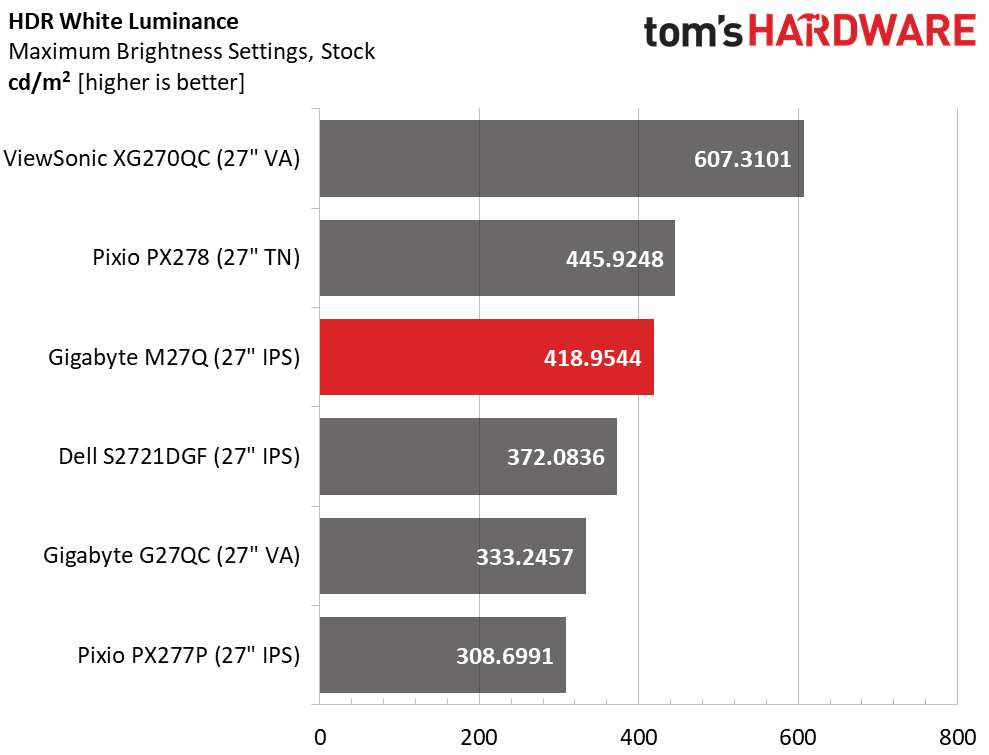
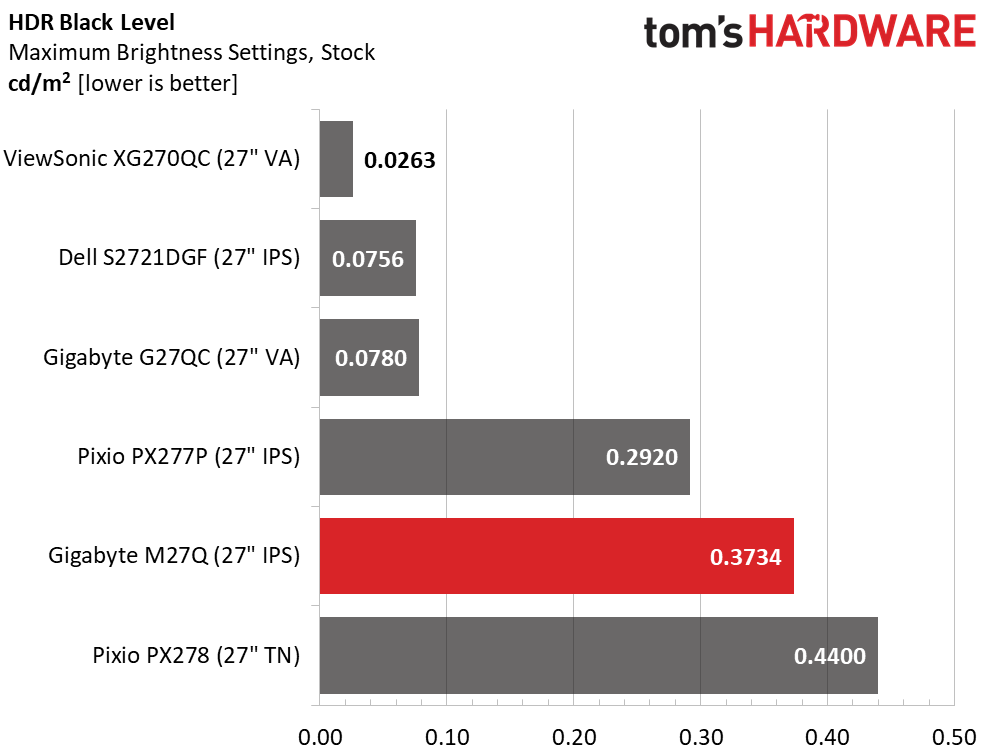
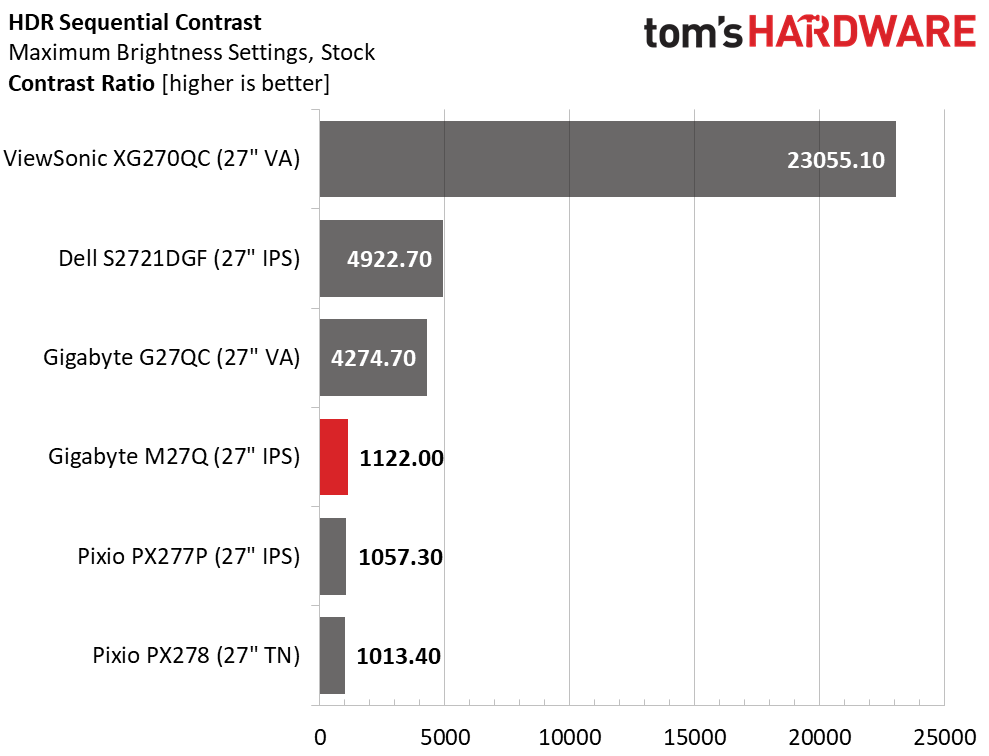
While the M27Q is mid-pack in the HDR brightness contest, it exceeds its 400 nit claim easily. The more important indicators are in the black level and contrast comparisons, where we can see that the M27Q isn’t using any dynamic contrast feature. Black levels are high, and dynamic range is the same for HDR as it is for SDR. The M27Q processes HDR signals correctly, but HDR content doesn’t look significantly different when displaying HDR content. You’ll get a better HDR experience from a VA monitor, especially one that uses a dynamic feature. like the ViewSonic XG270QC.
Grayscale, EOTF & Color
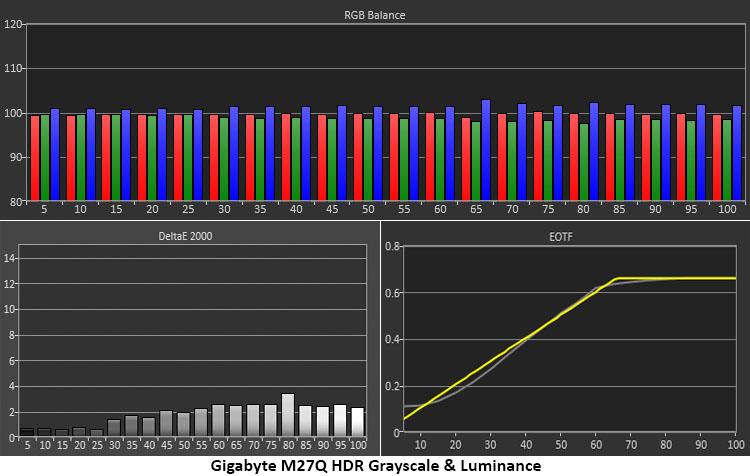
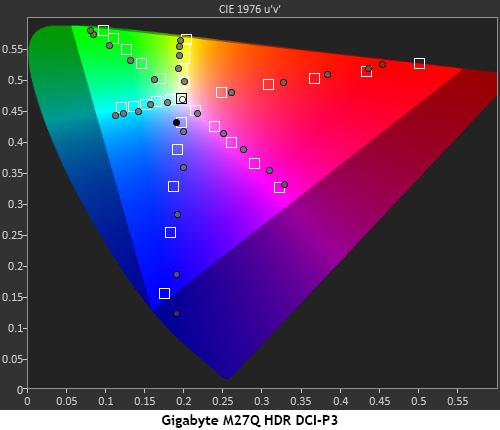
We have no complaints about the M27Q’s HDR color accuracy. Grayscale tracking is among the best we’ve seen in any HDR display, and the EOTF luminance curve is very close to the line. In the darker steps, it’s a bit too dark, but detail is still visible in real-world content. The transition to tone-mapping happens a little early, but that isn’t a perceivable issue.
HDR color tracking shows the same issues we saw in the SDR tests. Blue and green are a little over-saturated across the board, while red runs out of juice just after the 80% point. Hue values are nearly all on target, which means HDR color looks natural and correct.
Get Tom's Hardware's best news and in-depth reviews, straight to your inbox.
Current page: HDR Performance
Prev Page Grayscale, Gamma and Color Next Page Viewing Angles, Uniformity, Response and Lag
Christian Eberle is a Contributing Editor for Tom's Hardware US. He's a veteran reviewer of A/V equipment, specializing in monitors. Christian began his obsession with tech when he built his first PC in 1991, a 286 running DOS 3.0 at a blazing 12MHz. In 2006, he undertook training from the Imaging Science Foundation in video calibration and testing and thus started a passion for precise imaging that persists to this day. He is also a professional musician with a degree from the New England Conservatory as a classical bassoonist which he used to good effect as a performer with the West Point Army Band from 1987 to 2013. He enjoys watching movies and listening to high-end audio in his custom-built home theater and can be seen riding trails near his home on a race-ready ICE VTX recumbent trike. Christian enjoys the endless summer in Florida where he lives with his wife and Chihuahua and plays with orchestras around the state.
-
eating4fun The monitor stand is very flat. It's very easy to put things like your keyboard there if you need more deskspace in a moment.Reply -
Rabsi1985 I'm afraid of buying this monitor after reading some reviews of users that have troubles with the sub pixel lay-out When reading textReply -
Renato Cvikic me to. first time I ever hear for that problem.Reply
Specially because I need great versatile monitor. I don't game pretty much 10% of my pc usage mostly forums, reading texts, and yt..
So i need monitor that is good in all of that,
it seems to me that dell s27dgf is my choice? -
phl0w79 In the market for a new monitor used for gaming (PS5), reading, and photo editing. Been using an Eizo till now but want a larger more versatile screen. Been eyeing the M27Q for quite some time since it seem to strike a perfect blend of good performance and price. However, this test showed the cheaper G27QC better on all fronts but input lag (6 vs 7 ms). is there something i overlook or why would I get the M27 over the G27?Reply